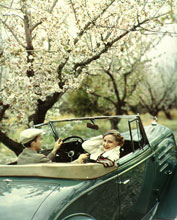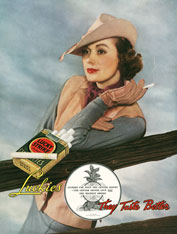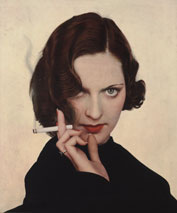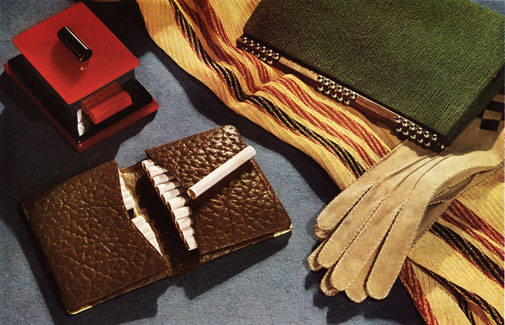The Challenge of Color
Color photography made its appearance in magazine advertising in the 1890s through the process of chromolithography. Advances in the technology came in 1910, with the development of two- and three-color printing processes. In general, color printing was more complicated and expensive than black and white, and its results less reliable and “realistic.” Trade journals essentially considered black and white “preferable to lurid or unnatural color reproductions.”8
Black-and-white printing offered artists in the 1920s and ’30s the ability to achieve extraordinary nuances in gradations of tone, texture, and saturation. Related industries responded, and by the end of the 1920s photographers could choose from a broad range of paper brands offering a variety of textures, finishes, sheens, and base colors that enhanced the dramatic quality of the resulting prints.9 Photograph conservator Paul Messier contends that in terms of reproduction, “many of the ‘artistic’ attributes permitted by the new and exciting range of black-and-white papers got lost when the image was copied for the purposes of print publications. Adopting color offered another way to make a bold photographic statement in a print publication.”10
As photograph historian Sally Stein writes, however, “So long as the linkage between colors and commodities remained weak, the perception of color’s utility for advertising could develop only to a point.”11 When color began to be added to the products themselves, advances in color printing and reproduction followed.
Starting in the 1920s American consumers went from a commercial world of white towels and black Model Ts to a range of products with a fantastic palette of hues from which to choose. The New York Times enthused: “The feeling for line and color has extended to the most common of everyday tools. . . . The enormously useful fountain-pen until recently was content to be merely useful, in its sober case of black rubber. It now charms with all the colors of the rainbow. . . . Bath-tubs are both streamline and softly pink.”12 Early market surveys, conducted by research pioneers like Daniel Starch, a Harvard Business School professor and author of The Principles of Advertising (The University Cooperative Co., 1923), also indicated that color ads yielded more orders for products.
Margaret Bourke-White explained that color posed “a great element of chance, as many unexpected and peculiar things can happen” and cautioned photographers to oversee the color process with printers to ensure faithful reproductions.13 As more magazines began to print in color in the 1930s, advances were made in the capture and reproduction of color images—with the aim of controlling prints so they matched the original transparencies, and the objects they depicted, as closely as possible. Nickolas Muray, for example, who landed accounts with clients like Lucky Strike, was the master of trichrome carbro printing, considered one of the superior color processes of the time and one that became widely used. A number of photographers in the NAAI exhibition, including James Doolittle and Alfred Cheney Johnston, were well known for their work in color.
- Mabel J. Stegner, “The Art of Advertising Food,” Commercial Photographer 3 (June 1928): 405, in Patricia Johnston, Real Fantasies: Edward Steichen’s Advertising Photography. Berkeley: University of California Press, 1997, p. 243.
- “Messier, Paul. 20th Century Black and White Papers.” Notes on Photographs. George Eastman House website: http://notesonphotographs.eastmanhouse.org/index.php?title=Messier,_Paul._20th_Century_Black_and_White_Papers.
- Paul Messier, personal interview, March 2010.
- Sally Ann Stein, The Rhetoric of the Colorful and the Colorless: American Photography and Material Culture Between the Wars. Ann Arbor: University of Michigan, 1991, p. 6.
- See Stein, note 11, p. 119.
- “Margaret Bourke-White on Color Photography and Photo-Murals,” Commercial Photographer (April 1934): 193.





